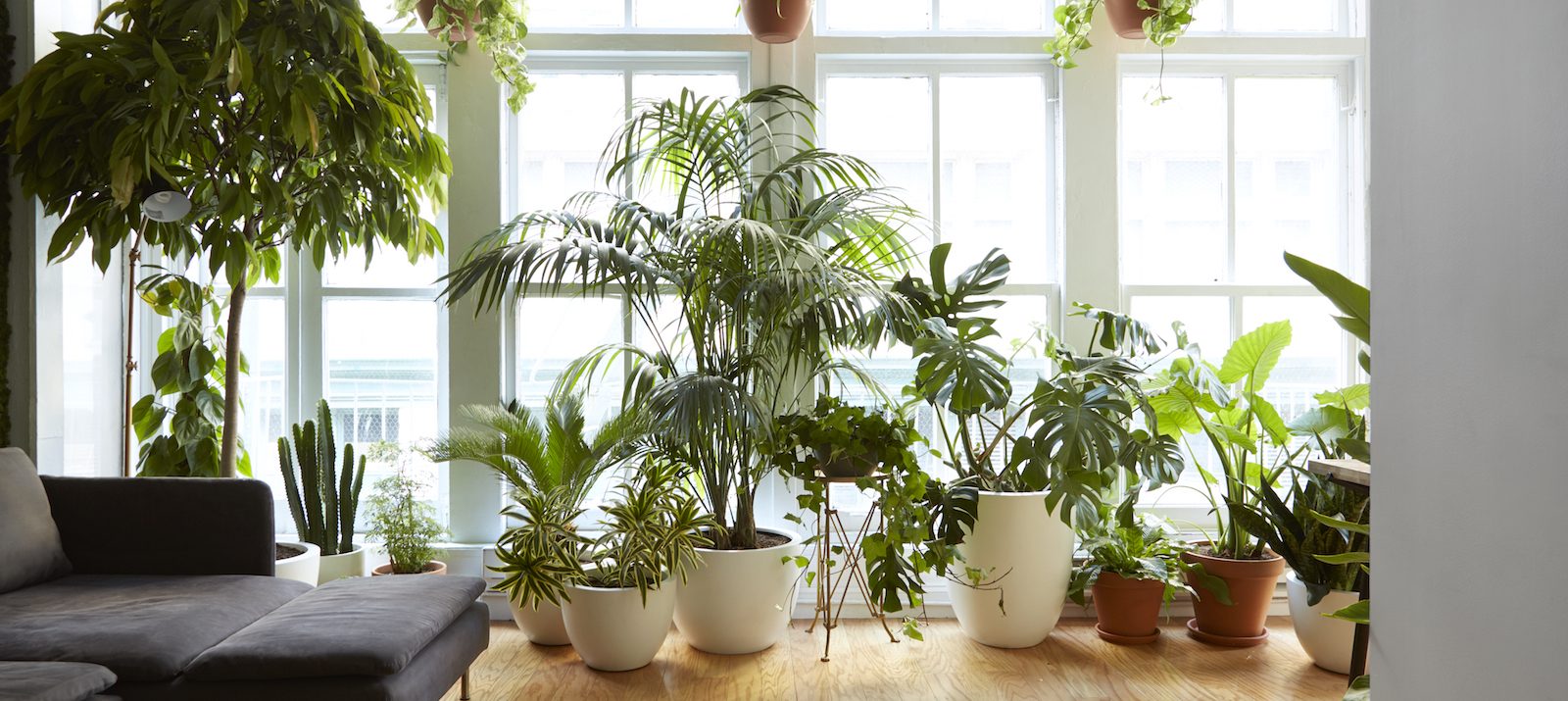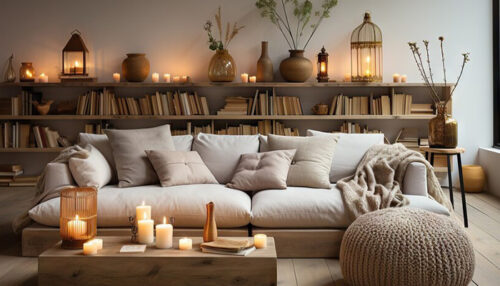The Environmental Protection Agency estimates Americans spend over 90% of their time indoors. And indoor air, especially in offices and apartment buildings, can contain shockingly higher concentrations of pollution than do the great outdoors.
Any such indoor contamination is generally the result of several factors, such as toxic emission from things like synthetic building materials, airborne molds, viruses, and pollutants.
Then there’s the issue of energy-conservative construction. It’s designed to reduce ventilation and circulation, which fosters poor indoor air quality.
Whatever the cause, according to a study led by the Yale School of Public Health, poor air quality can also contribute to declines in mental health.
Before you start donning a pollution mask in the bedroom, though, we have good news:
Indoor plants are not only decorative, but also a simple and sustainable solution for improving indoor air quality.
That’s right: plants naturally clean the air of toxins and chemicals. So they don’t just look good — they make us feel good, too.
In fact, the presence of plants indoors has been shown to:
- Improve indoor air quality by absorbing toxins, increasing humidity levels, and producing oxygen
- Boost morale, productivity, concentration, and creativity
- Reduce stress, fatigue, sore throats, and colds
- Improve indoor spaces by softening sterile interiors, dividing areas, and reducing noise levels
- Be therapeutic to care for
Now ready your green thumbs, because the following are just a handful of our favorite super-plants.
These seven rooted wonders will not only trick out your home, but also purify its air, too:
Click any of the links below to jump to a specific section:
Air Purifying Houseplants
Houseplant Care Tips
Air Purifying Houseplants
1. Neon Pothos (Epipremnum Aureum)
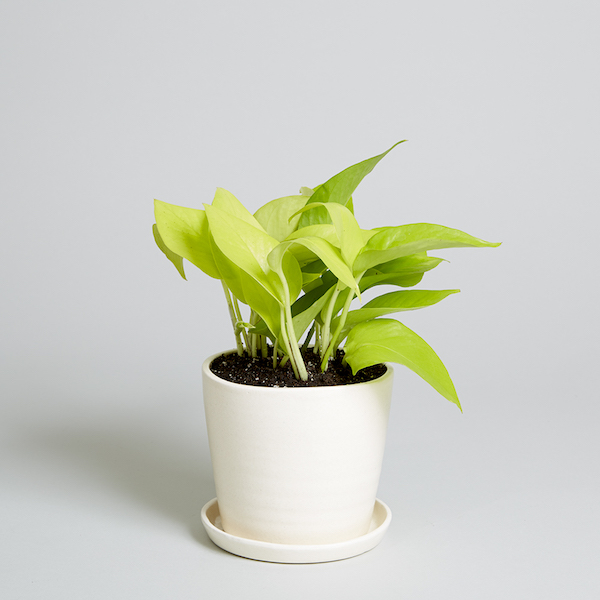
Origin: French Polynesia
Filters: Benzene, Formaldehyde, Xylene, and Toluene
This bright, trailing plant will add a pop of color to any space. It thrives in medium-to-low, indirect light, and needs to be watered about once a week.
2. Snake Plant (Sansevieria Trifasciata)
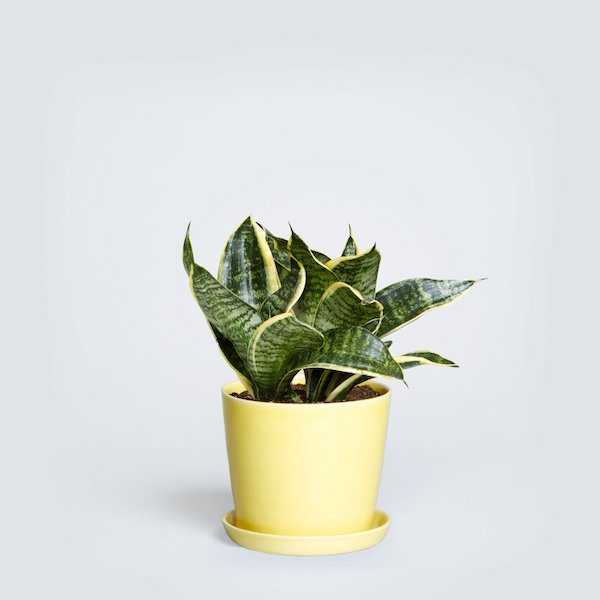
Origins: South Africa, Madagascar, and the lands around the Indian Ocean
Filters: Benzene, Formaldehyde, Trichloroethylene, Xylene, and Toluene
A hardy houseplant that is upright and loyal. The snake plant can go for weeks without water, so it’s a good choice for forgetful plant parents, and it will tolerate and thrive in most indoor light conditions.
3. Rubber Tree Plant (Ficus Elastica)
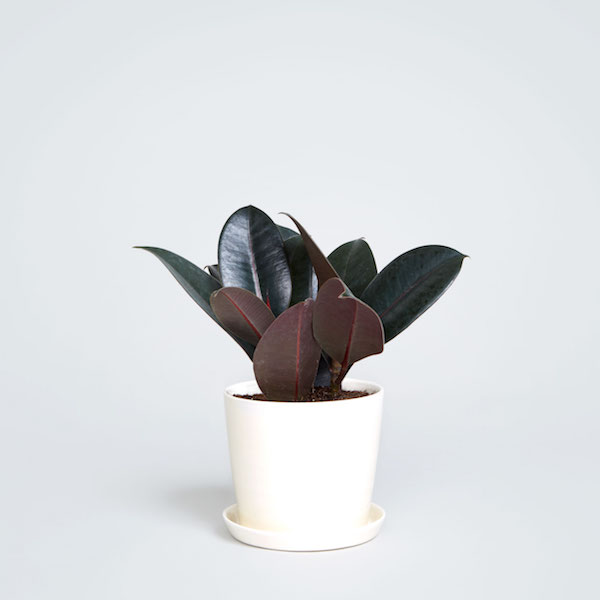
Origin: East India, Nepal, Bhutan, Burma, China, Malaysia, and Indonesia
Filters: Formaldehyde
Colorful and sometimes variegated, the rubber tree plant is a solid choice for those who want to add a striking verdant canopy to their space. It thrives in medium, indirect light, and needs to be watered about once a week.
4. Aloe Vera
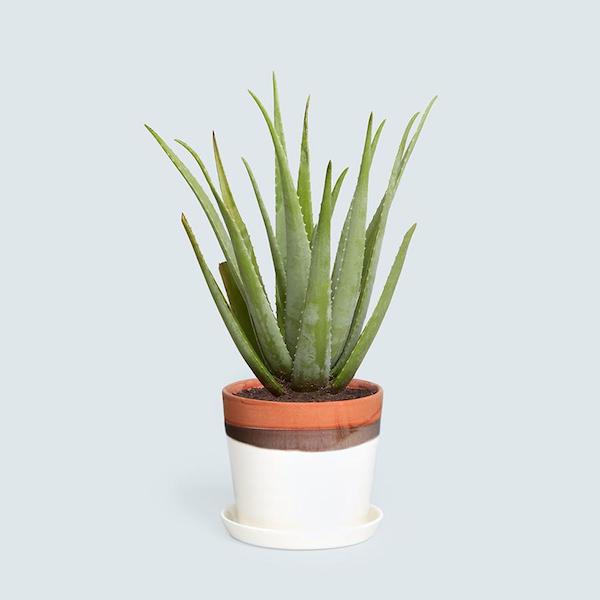
Origins: Egypt and The Arabian Peninsula
Filters: Benzene and Formaldehyde
These desert beauties love to sunbathe! Make sure to put your aloe on a sunny sill. It can go for weeks without water, so it’s another good choice for forgetful plant parents. The gel of Aloe vera can also be used used to treat minor skin conditions (not just sunburn!).
5. Aglaonema
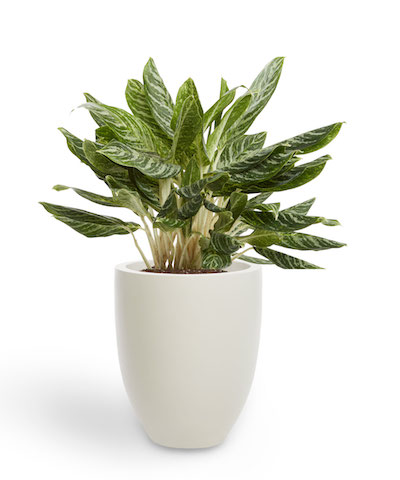
Origins: Asia and New Guinea
Filters: Benzene and Formaldehyde
Low-light tolerant, the Aglaonema comes in many different variegations and colors! And if you’re not sure when to water (about once a week), don’t worry:
It will let you know by dramatically drooping.
6. Dracaena
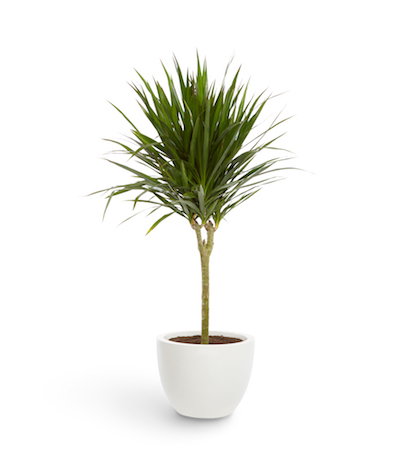
Origins: Africa, southern Asia, and tropical Central America
Filters: Benzene, Formaldehyde, and Trichloroethylene
Tolerant of many conditions, the dracaena does well in most spaces! It prefers medium to bright, direct sunlight, and a weekly watering. It can also grow quite tall inside, making for a great floor plant.
7. Ferns
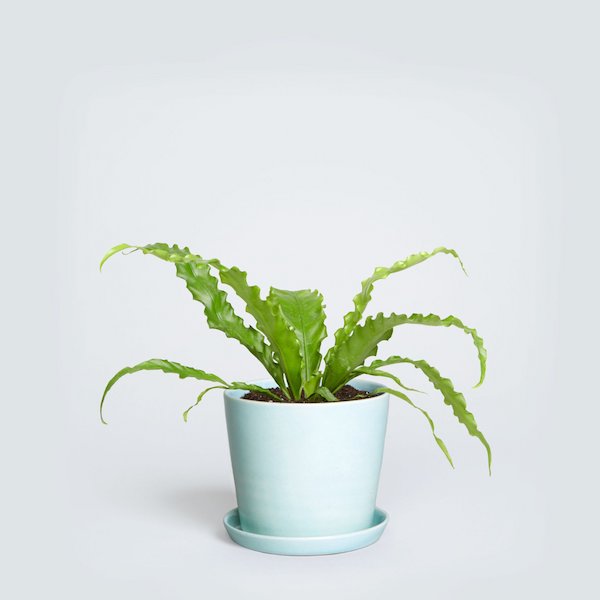
Origins: Depends on the variety
Filters: Formaldehyde, Xylene, and Toluene
Ancient and mysterious, ferns are an excellent addition to any space. They prefer a spot with moderate to low light, and that’s warm but not dry. Mist every day to every few days to keep humidity levels high.
Houseplant Care Tips
Not sure where to start?
Here are our top five tips for picking your perfect houseplant from the list above and keeping it alive:
1. Pick your houseplant based on your light.
Our number one rule is to determine the amount of sunlight your space receives, and to choose your plant accordingly.
If you’re not sure just by looking, then start by figuring out which direction your windows face. South-facing windows usually provide the most natural light, followed by east- and west-facing.
If there’s something outside your window (a large tree or building, for example) that could obstruct sunlight, make sure to take that into consideration, too.
2. Be mindful of your work schedule and social life.
Be sure to consider your daily schedule, travel frequency, and general forgetfulness while you decide on a plant.
If your crazy work schedule is what stands in the way of plant ownership, pick a plant that thrives despite neglect.
If you have bright light, try an aloe, and if you have low light, try a snake plant.
3. For most plants, it’s better to under-water than to over-water.
Beware of over-watering … it’s the easiest way to kill a houseplant. You may be tempted to water your plant on a schedule, but the best thing to do is to water it only when needed.
Always check the soil first, and only water when dry. Remember that environmental and seasonal changes can throw your plant’s watering schedule off, even indoors.
Generally speaking, plants need less water in the winter, when they’re growing slower. But if you’re blasting your heater, their soil might dry out quicker, and they might need more.
And always use tepid water to water your plant.
4. Increase humidity when necessary.
For plants that prefer more humid conditions, such as ferns, we recommend misting them daily or every few days with a small spray bottle. During the dry months of winter, grouping your plants together also helps create a humid microclimate.
5. Keep your houseplant’s environment as stable as possible.
Houseplants are most comfortable between 65 and 85 degrees Fahrenheit. Extreme fluctuation in a plant’s environment can seriously stress it out. Do your best to avoid placing your plant near temperature hazards like vents, radiators, and exterior doors, which might create drafts.
Happy growing!
This post was written by The Sill, your modern day garden center, combining commerce with content and community. Visit TheSill.com, your destination for perfectly potted plants shipped right to your door — or stop by The Sill Shop at 84 Hester Street in New York City’s Lower East Side.


